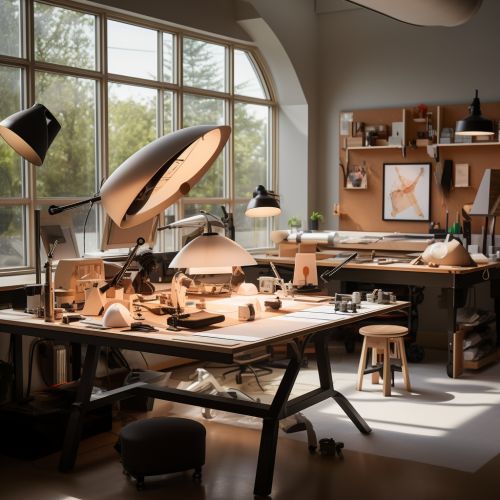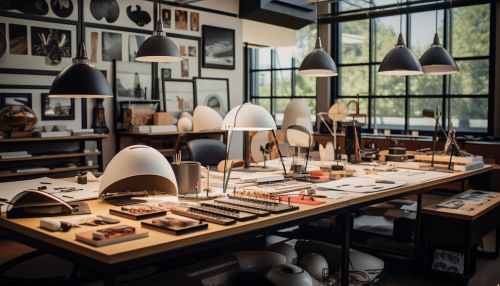Industrial Design
Overview
Industrial design is a process of design applied to products that are to be manufactured through techniques of mass production. Its key characteristic is that design is separated from manufacture: the creative act of determining and defining a product's form and features takes place in advance of the physical act of making a product, which consists purely of repeated, often automated, replication. This distinguishes industrial design from craft-based design, where the form of the product is determined by the product's creator at the time of its creation.
All manufactured products are the result of a design process, but the nature of this process can take many forms: it can be conducted by an individual Designer, or a team of Designers, and it can emphasize intuitive creativity or calculated scientific decision-making, and often emphasizes both at the same time, and it can be influenced by factors as varied as materials, production processes, business strategy and prevailing social, commercial or aesthetic attitudes. The role of an industrial designer is to create and execute design solutions for problems of form, usability, physical ergonomics, marketing, brand development, and sales.
History
The origins of industrial design are complex and the influence of various factors in its development are broad. The division of labour that underlies the practice of industrial design did have precedents in the pre-industrial era. The growth of trade in the medieval period led to the creation of large workshops in cities such as Florence, Venice, Nuremberg and Bruges, where groups of more specialized craftsmen made objects with common forms through the repetitive duplication of models which defined by their shared visual and technical characteristics.


Education and training
Industrial design is a largely systemic and coordinated field of business in which designers draw upon many fields to enhance function, value and appearance of products. A broad education is thus needed, with grounding in areas such as sociology, art, and materials science. Design education must be flexible enough to encompass and integrate new areas of knowledge as they become relevant.
Industrial design rights
Industrial design rights are intellectual property rights that make exclusive the visual design of objects that are not purely utilitarian. An industrial design consists of the creation of a shape, configuration or composition of pattern or color, or combination of pattern and color in three-dimensional form containing aesthetic value. An industrial design can be a two- or three-dimensional pattern used to produce a product, industrial commodity or handicraft.
Notable industrial designers
Many industrial designers have made such a significant impact on culture and daily life that their work is documented by historians of social science. Alvar Aalto, renowned as an architect, also designed a significant number of household items, such as chairs, stools, lamps, a tea-cart, and vases. Raymond Loewy was a prolific American designer who is responsible for the Royal Dutch Shell corporate logo, the original BP logo (in use until 2000), the PRR S1 steam locomotive, the Studebaker Starlight (including the later iconic bulletnose), as well as Schick electric razors, Electrolux refrigerators, short-wave radios, Le Creuset French ovens, and a complete line of kitchen implements for Sears, Roebuck and Company.
